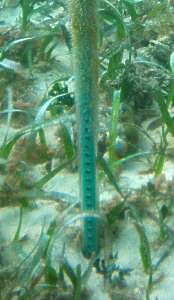Siltation
Siltation is the process by which water becomes polluted by silt and clay particles, leading to decreased water quality and negative impacts on aquatic ecosystems. This phenomenon is primarily caused by soil erosion, which can be accelerated by human activities such as deforestation, agricultural practices, and construction. Siltation affects rivers, lakes, and other water bodies, leading to a range of environmental problems, including the destruction of aquatic habitats, changes in water flow, and the reduction of sunlight penetration necessary for photosynthesis in aquatic plants.
Causes[edit | edit source]
The primary cause of siltation is soil erosion, where the top layer of soil is worn away by natural processes such as water flow and wind, and by human activities. Deforestation removes the vegetation that anchors soil, while agricultural practices such as plowing and overgrazing reduce ground cover, making soil more susceptible to erosion. Construction and mining activities disturb the land surface, further contributing to soil displacement. Urbanization increases surface runoff due to the proliferation of impermeable surfaces, which prevents water from infiltrating the soil, thus increasing erosion and siltation in nearby water bodies.
Effects[edit | edit source]
Siltation has several detrimental effects on water bodies and aquatic ecosystems:
- Reduced Water Quality: Silt particles can carry pollutants, including pesticides and heavy metals, into water bodies, degrading water quality.
- Habitat Destruction: Sediment accumulation can smother aquatic plants and destroy habitats for fish and other aquatic organisms.
- Altered Water Flow: Accumulation of silt in rivers and lakes can alter water flow, leading to increased flooding risk and changes in sediment distribution that can affect aquatic life.
- Decreased Biodiversity: The destruction of habitats and changes in water quality and flow can lead to decreased biodiversity in affected ecosystems.
Prevention and Control[edit | edit source]
Efforts to prevent and control siltation focus on managing soil erosion and reducing sediment runoff. These include:
- Afforestation and Reforestation: Planting trees and restoring forests can help stabilize soil and reduce erosion.
- Sustainable Agricultural Practices: Techniques such as contour plowing, cover cropping, and conservation tillage can reduce soil erosion from agricultural lands.
- Erosion Control Measures in Construction: Implementing silt fences, sediment traps, and other erosion control measures can minimize soil disturbance and prevent siltation during construction projects.
- Wetland Restoration: Restoring wetlands can help filter sediments and pollutants before they reach larger bodies of water.
Conclusion[edit | edit source]
Siltation is a significant environmental issue that affects water quality and aquatic ecosystems. By understanding its causes and implementing effective prevention and control measures, it is possible to mitigate its impacts and protect water resources for future generations.
Navigation: Wellness - Encyclopedia - Health topics - Disease Index - Drugs - World Directory - Gray's Anatomy - Keto diet - Recipes
Search WikiMD
Ad.Tired of being Overweight? Try W8MD's physician weight loss program.
Semaglutide (Ozempic / Wegovy and Tirzepatide (Mounjaro) available.
Advertise on WikiMD
WikiMD is not a substitute for professional medical advice. See full disclaimer.
Credits:Most images are courtesy of Wikimedia commons, and templates Wikipedia, licensed under CC BY SA or similar.
Contributors: Prab R. Tumpati, MD






